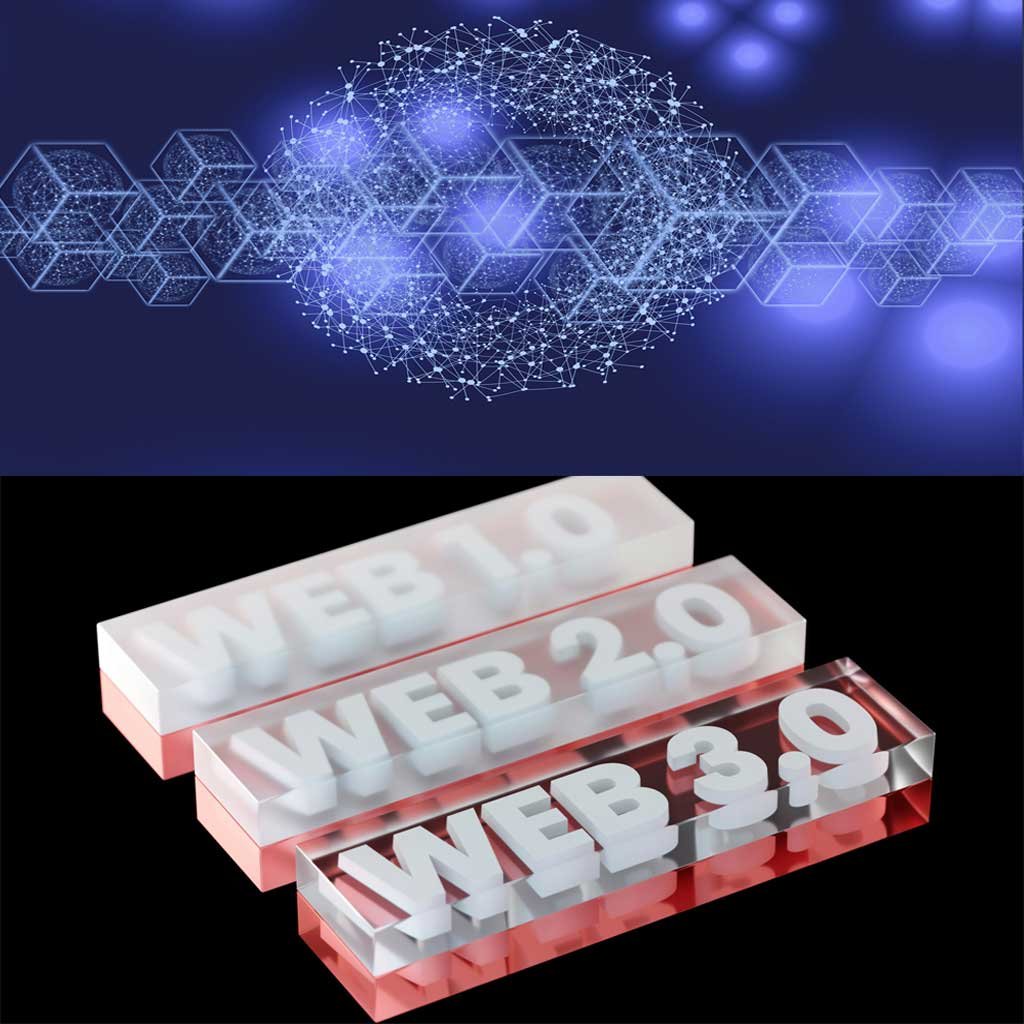
The Role of Decentralized Identifiers (DIDs) and Verifiable Credentials in Web 3.0: A Comprehensive Exploration
May 14, 2024 | Digital Techtune
The evolution of the internet has brought about significant changes in how we interact, transact, and communicate. From the early days of Web 1.0, which primarily consisted of static web pages, to the interactive and social web of Web 2.0, the internet has undergone remarkable transformations. Now, with the emergence of Web 3.0, there’s a paradigm shift toward a more decentralized, secure, and trust-centric internet infrastructure. At the heart of this transformation lie Decentralized Identifiers (DIDs) and Verifiable Credentials (VCs), two foundational technologies poised to revolutionize digital identity management, authentication, and data verification in the Web 3.0 era. In this comprehensive exploration, we delve into the role of DIDs and VCs in shaping the future of the Internet.
Understanding Decentralized Identifiers (DIDs)
Decentralized Identifiers (DIDs) serve as a cornerstone of self-sovereign identity (SSI) systems in Web 3.0. Unlike traditional identifiers such as email addresses or usernames, which are often issued and controlled by centralized entities, DIDs enable individuals, organizations, and entities to create and manage their own unique identifiers without reliance on intermediaries.
Core Components of DIDs:
- Unique Identifier: DIDs are represented by a globally unique string, ensuring uniqueness across different DID systems.
- Decentralization: DIDs are designed to be globally resolvable, enabling any party to look up the associated DID document without relying on a central authority.
- Cryptographic Security: DIDs leverage cryptographic mechanisms to ensure the authenticity, integrity, and confidentiality of interactions.
- DID Documents: Each DID is associated with a DID document containing public keys, service endpoints, and other metadata necessary for interactions.
Decentralized Resolution:
- DIDs are resolved using decentralized infrastructure such as distributed ledger technology (DLT), blockchain, or peer-to-peer networks.
- Decentralized resolution eliminates the need for centralized authorities, enhancing resilience, privacy, and security.
Interoperability:
- DIDs are designed to be interoperable across different systems and platforms, fostering seamless integration and compatibility.
- Standards such as the Decentralized Identifier Specification by the World Wide Web Consortium (W3C) ensure consistency and compatibility.
Role of Decentralized Identifiers (DIDs) in Web 3.0
Self-Sovereign Identity (SSI):
- DIDs empower individuals and entities with full control over their digital identities, enabling self-sovereignty and autonomy.
- Users can create, manage, and revoke DIDs independently, reducing reliance on centralized identity providers.
Privacy and Data Ownership:
- DIDs facilitate selective disclosure of identity attributes, allowing users to share only necessary information while preserving privacy.
- By owning their DIDs and associated data, individuals retain ownership and control over their personal information.
Interoperable Identity Ecosystem:
- DIDs promote interoperability across disparate identity systems, fostering a unified identity ecosystem.
- Through standardized protocols and interoperable formats, DIDs enable seamless identity interactions across platforms and domains.
Trust and Security:
- DIDs enhance trust and security in digital interactions by providing cryptographically verifiable identities.
- Immutable audit trails and cryptographic proofs associated with DIDs bolster transparency, accountability, and trustworthiness.
Understanding Verifiable Credentials (VCs)
Verifiable Credentials (VCs) complement DIDs by enabling the issuance, presentation, and verification of digital credentials in a decentralized, interoperable manner. VCs serve as digitally signed attestations or claims about an individual’s attributes, qualifications, or affiliations, issued by trusted entities known as issuers. These credentials can be shared and verified without reliance on centralized intermediaries, thereby enhancing trust, privacy, and efficiency in identity management.
Components of Verifiable Credentials:
Issuer: The entity that issues the verifiable credential, attesting to the validity of the claims.
Subject: The entity to whom the verifiable credential pertains, typically the individual or entity being identified.
Claims: Assertions made by the issuer about the subject’s attributes, qualifications, or affiliations.
Proof: Cryptographic proof generated by the issuer to verify the authenticity and integrity of the credential.
Types of Verifiable Credentials:
Personal Credentials: Credentials related to personal attributes such as name, age, address, etc.
Educational Credentials: Credentials attesting to educational qualifications, degrees, certificates, etc.
Professional Credentials: Credentials verifying professional certifications, licenses, memberships, etc.
Organizational Credentials: Credentials indicating organizational affiliations, roles, permissions, etc.
Role of Verifiable Credentials (VCs) in Web 3.0
Portable and Interoperable Identity:
VCs enable individuals to collect and carry their credentials across different platforms and contexts, promoting portability and interoperability.
Interoperable standards such as the Verifiable Credentials Data Model (VC Data Model) ensure consistency and compatibility across diverse ecosystems.
Selective Disclosure and Privacy Preservation:
- VCs facilitate selective disclosure of identity attributes, allowing users to share only relevant information as needed.
- By minimizing data exposure and sharing only verifiable claims, VCs enhance privacy and reduce the risk of identity theft or misuse.
Immutable and Tamper-Proof Credentials:
VCs are cryptographically signed by issuers, ensuring their integrity and immutability.
Tamper-evident properties of VCs make them resistant to forgery, tampering, or manipulation, enhancing trust and reliability.
Trust and Transparency:
VCs enhance trust in digital interactions by providing verifiable proof of identity claims.
Transparent issuance and verification processes, coupled with cryptographic proofs, bolster trustworthiness and accountability.
Integration of DIDs and VCs in Web 3.0 Ecosystem
Decentralized Identity Frameworks:
Various decentralized identity frameworks such as Hyperledger Indy, Microsoft’s ION, Sovrin, etc., leverage DIDs and VCs to build self-sovereign identity solutions.
These frameworks provide tools, protocols, and standards for creating, managing, and verifying decentralized identities and credentials.
Use Cases Across Industries:
- DIDs and VCs find applications across diverse sectors including finance, healthcare, education, supply chain, IoT, etc.
- Use cases range from secure authentication and authorization to credentialing, KYC (Know Your Customer), supply chain provenance, and beyond.
Standardization and Adoption:
- Standardization bodies such as W3C, Decentralized Identity Foundation (DIF), and others drive the development and adoption of standards for DIDs and VCs.
- Interoperable protocols and specifications enable seamless integration and widespread adoption across the Web 3.0 ecosystem.
Challenges and Future Directions
Scalability and Performance:
- Scalability remains a challenge in decentralized identity systems, especially concerning throughput and latency.
- Research efforts focus on improving the scalability and performance of DIDs and VCs through optimization techniques and layer 2 solutions.
Regulatory Compliance and Legal Frameworks:
- Regulatory compliance and legal frameworks pose challenges in the adoption of decentralized identity solutions, especially regarding data protection, privacy, and liability.
- Collaborative efforts between regulators, industry stakeholders, and technology providers are necessary to address regulatory concerns and promote legal interoperability.
Usability and User Experience:
- Usability and user experience play a crucial role in the adoption of decentralized identity solutions.
- Efforts are underway to simplify user interfaces, enhance user education, and improve the overall user experience of decentralized identity platforms.
Education and Awareness:
Education and awareness initiatives are essential to promote understanding and adoption of DIDs and VCs among end-users, developers, enterprises, and policymakers.
Community engagement, training programs, and educational resources play a vital role in fostering a knowledgeable and supportive ecosystem.
Conclusion
Decentralized Identifiers (DIDs) and Verifiable Credentials (VCs) represent fundamental building blocks of Web 3.0, revolutionizing digital identity management, authentication, and data verification. By enabling self-sovereign identity, privacy-preserving credentialing, and trust-enhancing mechanisms, DIDs and VCs empower individuals, organizations, and entities with greater control, security, and interoperability in the digital realm. As we navigate toward a more decentralized, secure, and trust-centric Internet infrastructure, DIDs and VCs will continue to play a pivotal role in shaping the future of the Internet and driving innovation across diverse industries and applications.

